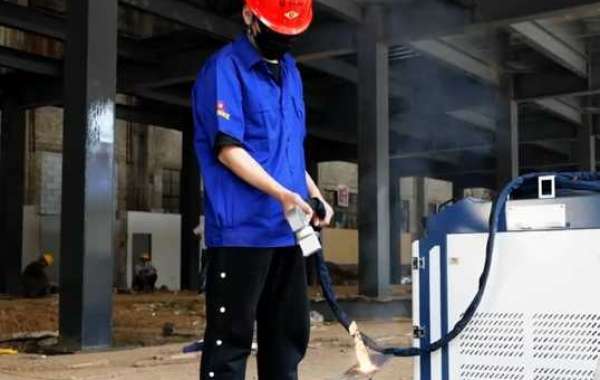In recent years, laser cleaning machines have emerged as a revolutionary solution for the delicate task of restoring and preserving cultural heritage artifacts.
What is Laser Cleaning?
Laser cleaning is a modern, non-contact method that uses focused laser beams to remove unwanted substances like dust, rust, paint, or biological growth from the surface of objects. The laser energy interacts with the contaminants, vaporizing or ablating them without affecting the underlying material. This precision makes it an ideal choice for cleaning artifacts, which often require a delicate balance between effective restoration and the protection of historical value.
Why Laser Cleaning?
Precision and Control: Laser cleaning machines offer exceptional precision, enabling conservators to target specific areas without causing harm to the object itself. The intensity, pulse duration, and frequency of the laser can all be adjusted to ensure that the cleaning process is gentle yet effective, making it especially valuable for fragile and complex surfaces.
Non-Damaging to Surfaces: Unlike traditional methods that may involve abrasive materials or harsh chemicals, laser cleaning is non-invasive. This ensures that the underlying surface—whether stone, metal, wood, or even delicate paintings—remains intact, preserving the historical integrity of the artifact.
Environmentally Friendly: Laser cleaning does not require the use of chemicals, solvents, or other potentially harmful substances. This makes it an eco-friendly option that avoids the disposal of toxic waste and minimizes the risk of chemical damage to both the artifact and the environment.
Efficiency and Speed: Laser cleaning is also relatively fast compared to traditional methods. The speed and effectiveness of lasers allow conservators to work on large or detailed objects more efficiently, reducing the amount of time and labor required for restoration.
Applications in Cultural Heritage Restoration
Laser cleaning has been successfully employed on a wide range of cultural heritage materials. For example, it has been used to clean and restore sculptures, frescoes, ancient manuscripts, and even historical buildings. In many cases, lasers have been used to remove centuries of grime from stone monuments or to eliminate corrosion from metal artifacts without risking the loss of intricate details or features.
Conclusion
Laser cleaning represents a groundbreaking advancement in the field of cultural heritage preservation. Its ability to clean delicate artifacts with precision, while maintaining the integrity of the object, has made it an invaluable tool for museums, galleries, and conservationists around the world. As this technology continues to evolve, it promises to play a crucial role in the preservation of our shared cultural history for future generations to admire and study.














